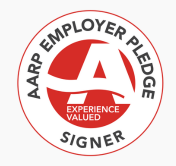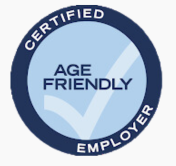When employers look at a resume, we want the focus to be on one thing – qualifications: how well do the skills, experience, and accomplishments of a candidate match a job’s requirements? In fact, as a country, we’ve spent years legislating and regulating what companies and hiring managers are allowed to ask to make sure attention stays on a candidate’s fit with a job and nothing else – not age, not race, not ethnicity, not gender, not disability, not criminal history, and definitely not parental role, an attribute LinkedIn’s new caregiver job titles seem to ask employers to consider. According to Bef Ayenew, LinkedIn’s director of engineering, the introduction of ‘stay-at-home mom,’ ‘stay-at-home dad,’ and ‘stay-at-home parent’ titles is a response to members needing “more ways to reflect career gaps on their profile due to parenting and other life responsibilities.” LinkedIn also hopes to “normalize such gaps in formal employment.”
The career-break stigma does need to end. Reality is that most of us have peaks and valleys in our career histories, many of which reflect a rich life story that makes us better people and better employees. But making career gaps front-and-center on a LinkedIn profile carries risks and does not address the real needs of those grappling with the impact of a break.
First, career gaps are personal. “Normalizing” them as part of the employment process places pressure on job seekers to disclose and explain extended time away from work. While parenting accounts for a large percentage of those who take breaks, a significant number of professionals step away for other reasons: sickness, a child with special needs, mental illness, addiction, aging family members, or a sabbatical to explore a personal calling. A conversation with an employer about a career break highlighted on a LinkedIn profile or resume opens the door to uncomfortable questions about health, family values, and other private information that is irrelevant, or should be, to a candidate’s qualifications for a job.
In addition to inviting intrusive questions, putting a career break with the “stay-at-home-parent/mom/dad” moniker on a resume, still triggers unfair stereotypes such as “dated,” “distracted,” or “unambitious” in many employers’ minds. As much as we may want, spotlighting a career break will not have nearly the power in changing an employer’s mind about a gap as highlighting relevant experience (paid or unpaid), skills, and an eagerness to return to work.
Finally, professionals who have taken or are contemplating a career break, don’t need validation of their choices, as LinkedIn’s labeling seems to advocate. Instead, what many yearn for is more choice – more flexibility – in where and when they work. The desire for more flexibility is especially acute for women who continue to shoulder the largest share of caregiving responsibilities. Before the pandemic, an estimated 2.5 million college-educated mothers had opted out of the workforce (many more have left since Covid). In a 2016 study by Bain, 70 % of women who had dropped out said they would have stayed in given more flexibility. Aging baby boomers, longer lifespans, and the escalating cost of care will continue to intensify the demand for caregiving and its impact on workers. Without workplace flexibility, more professionals will be forced to step away from their jobs.
Those of us who have taken career breaks, no matter the reason, know that our time away from work meant a lot to someone – whether kids, or family, a parent or ourselves. Be proud. Those we cared for or supported during our breaks valued the time and talents we shared with them. But we should not expect nor encourage an employer to do the same. Instead, we should push employers to create flexible opportunities that allow more professionals to stay in the workforce while juggling life’s responsibilities. We should push employers to evaluate those of us returning to work based strictly on our professional credentials and not our gap. And we must personally make sure we are re-tooled, confident, and ready to return. These measures will have a far greater and lasting impact on erasing the stigma of a gap than bringing attention to it on a LinkedIn profile.
SOME TIPS FOR HANDLING A CAREER GAP
The challenges of gaps in a career’s progression are real, and many professionals returning to the workforce struggle with how to deal with them. The best strategy is to “own your gap” by understanding how it shaped you as a person and professional. If you believe the break is an important part of your career story, share it, but briefly, positively, and never apologetically. Highlight any unpaid work that helped you hone competencies relevant to your professional goals. Otherwise, stay focused on demonstrated skills and professional experience in your resume, LinkedIn profile, and interactions with employers. Start a resume with the most recent work experience, no matter how long ago, and include at the end of a resume, volunteer or other unpaid work done during a break. Sharpen your basic workplace technology skills and update your functional and industry competencies as part of your journey back to work. No matter how big the gap, be prepared to speak about your career chronology, professional strengths, and accomplishments as if it were yesterday. Lastly, if flexibility is critical to your successful return, be ready to negotiate and make the case for part-time or remote hours but only after you have made a compelling case for your fit for a position.
Gwenn Rosener is co-founder of FlexProfessionals, a niche recruiting and staffing company operating in the DC and Boston metro areas.









